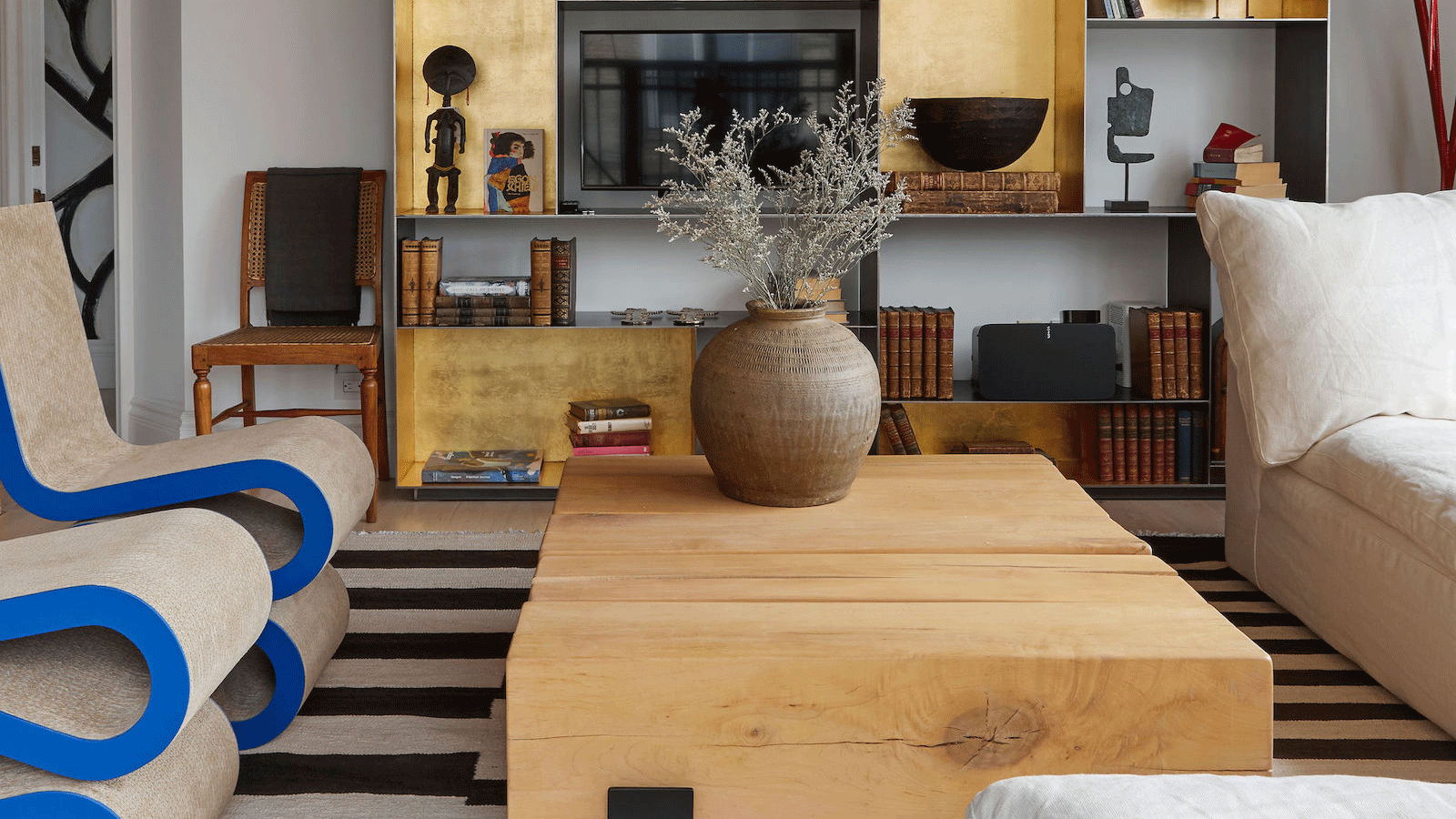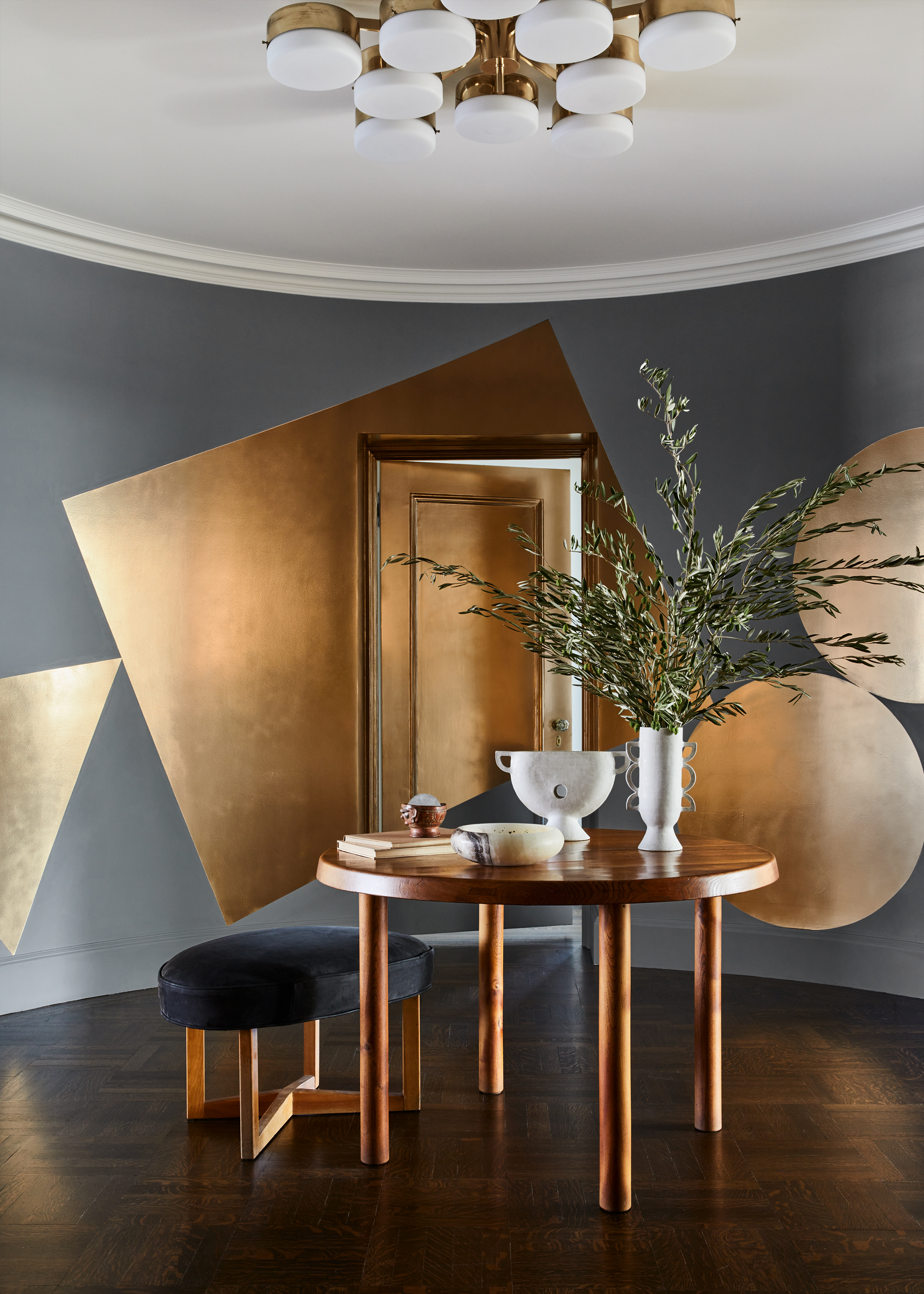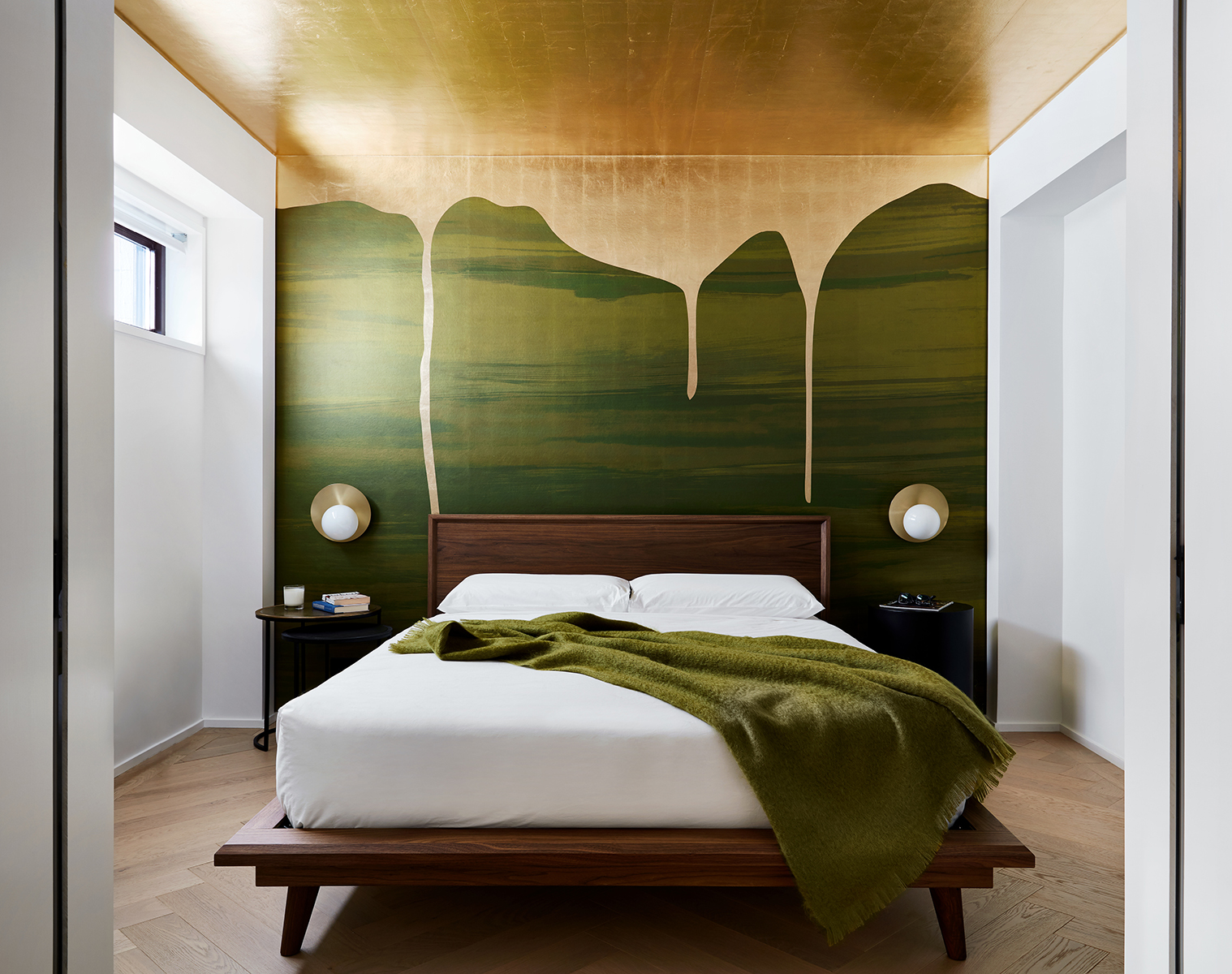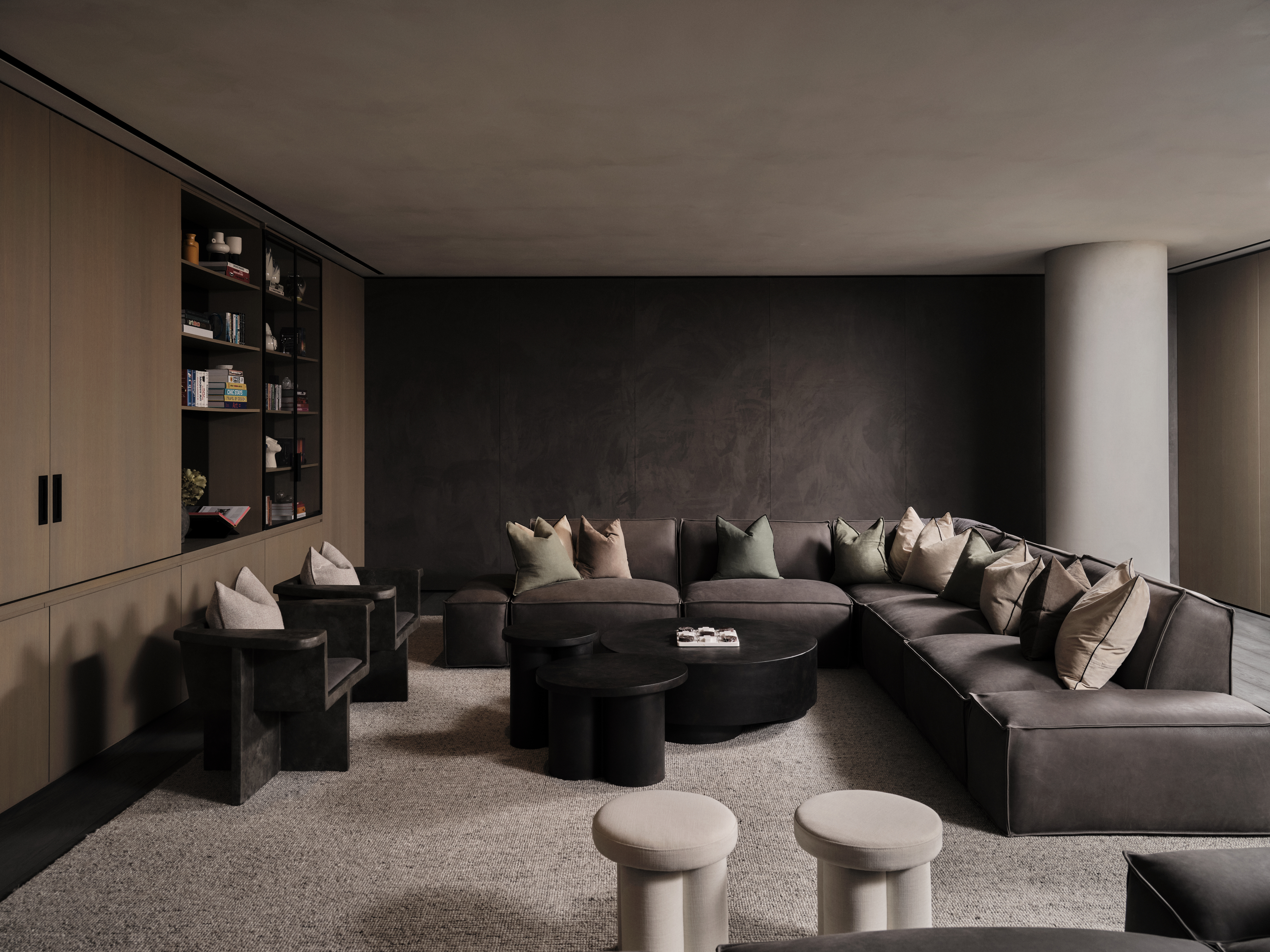Is gold leaf out of style? Interior designers decide whether this millennia-old technique can feel fresh today
Gold leaf, or gilding, has embellished everything from furniture to architecture for thousands of years. But does it hold up in a modern home?


Gold leaf is a decorative technique that's been around for millennia as a sign of wealth and opulence, and really not much has changed today. You'll still find gold leaf used in the most ornate, luxurious spaces - but is it something that has a place in more contemporary interior design?
'Currently people are seeking interiors with a more earthy, soothing ambiance, emphasizing balance and harmony,' says Kashi Shikunova, director at Yam Studios. 'This shift in preference could be attributed to the impact of the pandemic, as people spent more time at home and desired a timeless and understated aesthetic.'
The question then arises – is gold leaf in style, or is there a more muted version of it taking over? What other paint ideas are interior designers turning to instead? To find out, we asked experts.
What is gold leaf?

This paint style originated in Turkey more than 8,000 years ago, and eventually moved to all of Europe. It was used to showcase a kingdom's extravagance and wealth. Many palaces, architectural structures, and statues were covered in gold leaf to give spaces and objects a decorated look.
Gold leaf is typically gold foil or gold-colored metal that has been beaten into very thin sheets. These, once flattened can be used to cover walls, ceilings, or even furniture pieces. The material gives a warm golden glow in low light and can look especially striking in sunlight. Gold leaf adds opulence, drama, and grandeur to a home, especially when used on the living room or bedroom ceiling, across walls or on furniture.
Is gold leaf on trend?

'Gold leaf, while capable of making a bold statement, can also lead to a sense of fatigue over time,' says Kashi Shikunova. 'In residential settings, it appears that people are steering away from excessive gold leafing, prioritizing a calmer feel. On the other hand, in commercial spaces such as bars gold leaf feels still popular, as people tend to spend less time there and appreciate bolder features.'
While some designers have moved on from this paint technique for walls entirely, others do agree that while gold leaf may not be passé, its use and application has become a lot more subtle today.
The Livingetc newsletters are your inside source for what’s shaping interiors now - and what’s next. Discover trend forecasts, smart style ideas, and curated shopping inspiration that brings design to life. Subscribe today and stay ahead of the curve.
'When using gold leaf, the most important aspects are application and a well thought out plan,' says Donna DuFresne, founder of Donna DuFresne Interior Design. 'If done well, gold leaf can bring a sophisticated touch to a space, but if done poorly, it can easily become a bit gaudy.'
'Eye-catching and dynamic, gold leafing looks both back and forward simultaneously,' says Julia Mack, founder of Julia Mack Design. 'Through the ages, gold has been used to evoke opulence and its allure in interiors has not diminished but has become quite subtle. Consider selecting a warm tone and use it on the smaller features such as picture frames, lighting pieces, candle sticks, door knobs, and hinges. By adding touches of metallic sparkle throughout your home, you’ll achieve a refined elegance that elevates each of your spaces with unique beauty and elegance.'
What alternatives to gold leaf are designers using instead?

For those designers and homeowners who subscribe to a more minimalist aesthetic may feel that gold leaf is not suited to their tastes. In that case, what is a good alternative to this style of paint?
'Gold leaf, after all, is all about texture and depth; currently a highly sought-after element in interior design,' says Kashi. 'For those who do not like gold leaf can try other textural paints. For example, limewash paint is having a big moment and probably will be around for a while as it enhances spaces with interest and depth but in a more understated and timeless way. Additionally, specialist plasters, such as Tadelakt, are also very popular. Both offer a quiet sense of luxury, aligning with the current preferences in interior design.'

Aditi Sharma Maheshwari started her career at The Address (The Times of India), a tabloid on interiors and art. She wrote profiles of Indian artists, designers, and architects, and covered inspiring houses and commercial properties. After four years, she moved to ELLE DECOR as a senior features writer, where she contributed to the magazine and website, and also worked alongside the events team on India Design ID — the brand’s 10-day, annual design show. She wrote across topics: from designer interviews, and house tours, to new product launches, shopping pages, and reviews. After three years, she was hired as the senior editor at Houzz. The website content focused on practical advice on decorating the home and making design feel more approachable. She created fresh series on budget buys, design hacks, and DIYs, all backed with expert advice. Equipped with sizable knowledge of the industry and with a good network, she moved to Architectural Digest (Conde Nast) as the digital editor. The publication's focus was on high-end design, and her content highlighted A-listers, starchitects, and high-concept products, all customized for an audience that loves and invests in luxury. After a two-year stint, she moved to the UK and was hired at Livingetc as a design editor. She now freelances for a variety of interiors publications.
